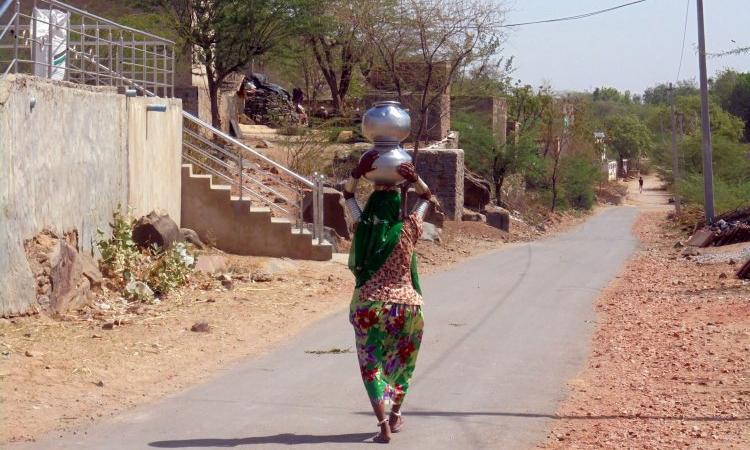
Droughts are one of the most feared natural calamities impacting agriculture and food production as well as the morale of millions of farmers in India. Recent studies show that the frequency of droughts is increasing. While droughts are known to cause severe rural distress, little is known on how gender influences the experiences of men and women in coping with droughts.
Women in rural areas are already burdened with household work and their entry into agricultural labour has further added to their woes. In spite of toiling hard in the fields, women have no land rights nor decision-making powers and their health is often compromised.
How do they then manage to cope with extreme situations such as drought as compared to men and what impact does it have on their well being? This paper “Household drought coping, food insecurity and women in Odisha” by Dr Basanta Sahu published in the Economic and Political Weekly discusses the findings of a study conducted in two districts of Odisha namely Bolangir and Kendrapada that aimed at exploring:
- The gendered impacts of droughts on household food and livelihood security
- Coping mechanisms adopted by men and women and factors affecting these
Both districts experience frequent droughts with Bolangir being one of the poorest tribal districts and Kendrapada, a relatively developed coastal district with good connectivity and multiple cropping practices.
The study found that:
Food shortages and income loss led to household distress
Household food shortages in terms of availability and quality were more intense in dry and tribal areas like Bolangir and among the landless and poor groups. Households could cope with it by:
Taking loans and selling off assets
People coped with income shortages by borrowing from informal sources. This money was mostly spent on food and critical non-food items and also to meet the initial costs of migration. In some cases, people sold off their assets or livestock in a desperate need to cope with food demands during droughts.
Outmigration
Men migrated out in search of work to cope with food and income shortfalls while women stayed back and looked after the children and the elderly.
Changes in diet patterns and quantity of food
Poor households coped with food shortages by changing their diet patterns frequently during droughts by switching from preferred foods to cheaper, less-preferred substitutes. For example, in tribal areas in Odisha, many poor households consumed coarse cereals and other cheap and locally available foods such as gurudi, bamboo sprouts, leaves, etc. They also changed their staple food from maize to rice or wheat.
When the available food was inadequate, many poor households tried to reduce the number of people that needed to be fed, on a temporary basis. This was done by sending some of the family members away temporarily, sending children to neighbours’ houses that had food or abandoning family members.
Landless and marginal farming households also resorted to extreme means such as cutting down the quantity of meals, reducing the number of meals per day, favouring some household members over others, and skipping meals in a day to cope with the unavailability of food.
Women suffered the most while coping with food shortages and income loss
Women’s health was compromised
Women were hit the hardest due to lack of clean water and changes in diet. They suffered from a range of health problems such as fever, weakness and reproductive health issues.
Women’s work burden increased
Drought-induced crop and income losses forced many women, especially from poor tribal areas to take up less productive and low-remunerative activities such as subsistence farming, collecting forest produce, undertaking seasonal works and participating in public employment programmes.
Women bore a greater share of the work burden by working extended periods of time, undertaking more tasks and engaging children in economic activities. Many a time, it was the girl child who helped the mother with her household tasks leading to her absence from school and outdoor activities.
The responsibility of looking after the household members such as elderly and children and coping with food shortages had to be totally managed by the women as men migrated out in search of jobs. Women from poor and landless households faced maximum food insecurity and tried to cope with it by exploring various means to access food like collecting it from forests, rivers, water bodies etc depending on seasonality, availability and access.
Women consumed less
It was the women who compromised the most when it came to food distribution in times of crisis and they coped by eating less or adjusting portions of food. They were given the lowermost priority while allotting food portions when the food available was less. Usually, men and the children in the family were given first preference, the elderly and then the women and girls in the household.
Gender-sensitive developmental plans to cope with droughts needed
The paper argues that the availability of food and water is very crucial for rural households, especially for women who suffer the most during drought-induced scarcity. Local food production can help greatly in improving household food security and gender equality in circumstances where the participation of women in food production is increasing.
The impact of drought on households can be different, depending on local socio-economic conditions and geographic settings. Region speci?c and gender-sensitive developmental plans focusing on long-term drought proo?ng, improving irrigation and farm practices, enhancing access to and use of water, land, credit and other resources are thus very crucial.
The paper ends by arguing that improving public food provisioning and conserving available resources with women’s participation and decision-making can go a long way in improving gender equality and food security in drought-affected areas.
A copy of the paper can be downloaded from below: